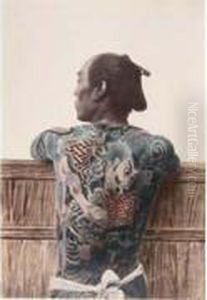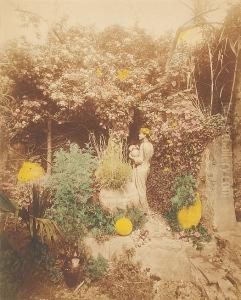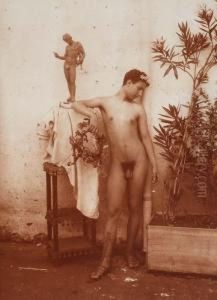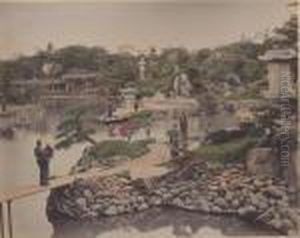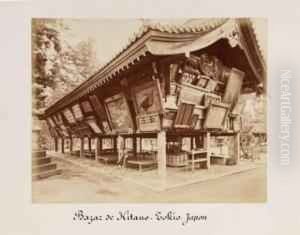Wilhelm, Baron Von Stillfried Paintings
Raimund Wilhelm, Baron von Stillfried, also known as Wilhelm von Stillfried-Rathenitz, was an Austrian photographer who is best known for his work in Japan during the late 19th century. Born on August 6, 1839, in the city of Komotau in Bohemia (now Chomutov, Czech Republic), he was part of the aristocratic Stillfried family. Little is documented about his early life and education, but by the 1860s, he had embarked on a career that would establish him as a significant figure in the history of photography.
Von Stillfried moved to Yokohama, Japan, in 1871, during a period when the country was opening up to Western trade and influence following the Meiji Restoration. He established a photographic studio and became known for his hand-colored portraits and landscape photographs. His work captured a range of subjects, from traditional Japanese scenes and customs to the rapidly modernizing urban landscapes. He was particularly adept at creating albumen silver prints, a popular medium of the time, which he often delicately colored by hand.
In 1875, he bought the studio of the prominent Italian-British photographer Felice Beato, another key figure in 19th-century Japanese photography, and acquired Beato's stock of negatives. Von Stillfried continued to expand his portfolio and became renowned for his artistic compositions and technical skill. His photographs were sought after by Westerners wanting a glimpse of the exotic East, and by Japanese customers interested in the novel medium.
Despite his success, von Stillfried's later years in Japan were marred by financial difficulties and disputes with competitors. He sold his studio in 1885 and left Japan around 1886. He spent some time in the Philippines and then traveled to Vienna, where he lived until his death on August 12, 1911.
Von Stillfried's legacy is significant in the context of early photography in Japan and the portrayal of Japanese culture to the Western world. His images serve as historical documents of a pivotal time in Japan's history. His work is included in the collections of many major museums and continues to be studied for its artistic and cultural value.
